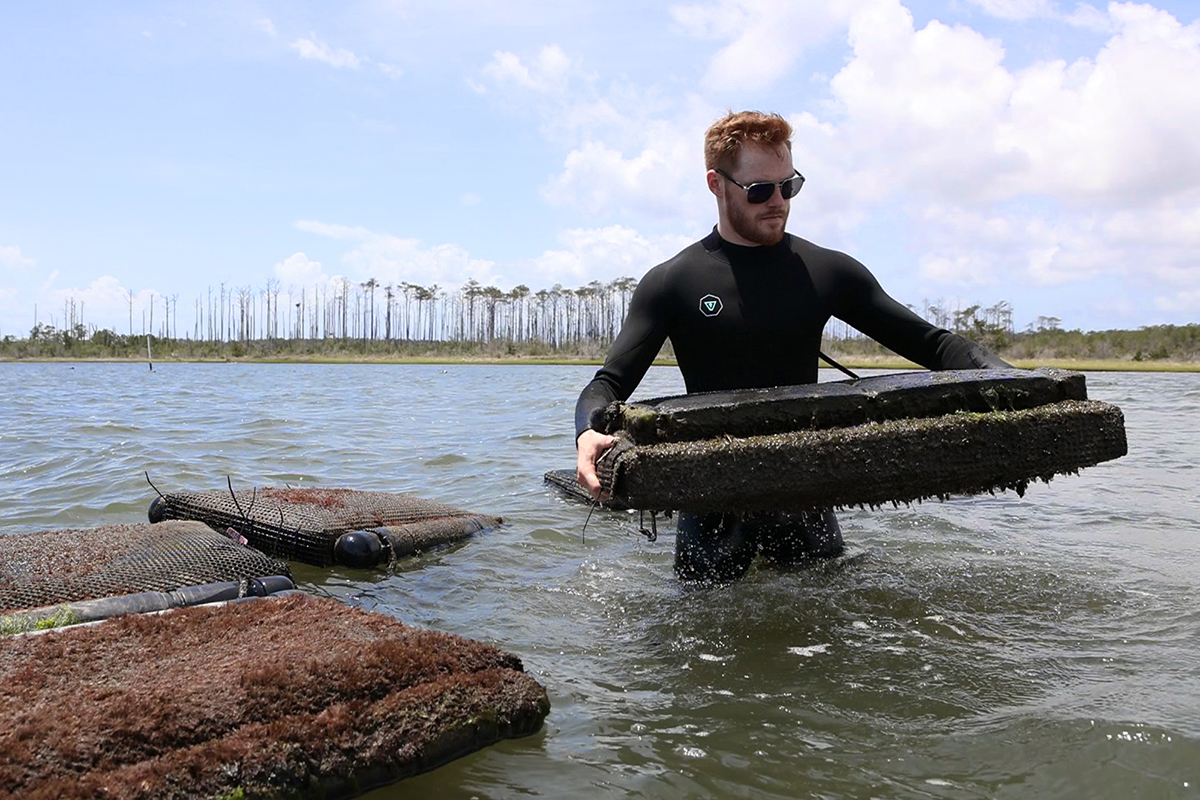
Researchers and shellfish growers say that this season has been rife with mass oyster die-offs.
Exact triggers for these oyster mortality events are highly variable and are the subject of ongoing research.
Supporter Spotlight
Bob Rheault, executive director of the East Coast Shellfish Growers Association, told Coastal Review these die-offs have been a longstanding issue in parts of the mid-Atlantic, with “lots of confounding clues” but no clear answers.
“Summer mortality,” the seasonal loss of oysters during the summer months, is a familiar phenomenon, but this year’s mortality events appear to be especially severe and widespread.
Mark Ciesielski, a doctoral candidate in the Noble Lab in the University of North Carolina Institute of Marine Sciences in Morehead City, is part of a team of researchers from multiple universities investigating the complex factors behind oyster mortality events. He said this season had been brutal for farmed oysters, with big losses across the board at his North Carolina study sites.
Ciesielski’s oyster mortality research with Dr. Rachel Noble is supported by the state Commercial Fishing Resource Fund and with new state funding effective in July, the North Carolina Policy Collaboratory.
The team is looking for causes, and not just for this year’s problem, but it’s likely a complex confluence of factors.
Supporter Spotlight
Dr. Tal Ben-Horin is an aquatic pathologist and head of the North Carolina State University Center for Marine Sciences and Technology’s Shellfish Pathology Laboratory, one of the partners involved in the project. His lab in Morehead City studies pathogen and disease impacts on shellfish aquaculture and has been working to understand the root causes behind these mortality events, wherein seemingly healthy oysters suddenly die.

“Sometimes the oysters are fine one day and dead the next,” Ben-Horin said.
He has observed that one common characteristic of summer mortality is an effect on the oyster’s ability to regenerate cells in its gastrointestinal tract.
“Typically, oysters regenerate these cells,” Ben-Horin said. “What we see associated with these events is no regeneration.”
The result is that the oysters then starve to death. Not all of them show visible symptoms, but some of them are quite obviously affected.
“There’s just nothing left,” Ben-Horin said. “The animals are withered away.”
Also involved in the project are Ami Wilbur at UNC Wilmington and Jess Small and Corinne Audemard at the Virginia Institute of Marine Science.
Widespread, similar timing
What was unique about this year, said Ben-Horin, is the geographic scope — and that across a large area, mortality events within individual estuaries all seemed to happen at the same time.
On May 23, several farm sites reported shellfish mortalities of varying severity, from as far south as Stump Sound in Onslow County to as far north as Nelson Bay in Carteret County, about 115 miles of coastline. Several of these events were extreme, with an industry partner’s site in Stump Sound losing up to 90% of its oysters.
When so many events happen at the same time, it suggests an environmental trigger. Ben-Horin suspects that the combination of hot temperatures and increased salinity might be the driving force behind these mortalities. At the same time, oysters are highly adaptable.
Instead of the environmental factors being a trigger for the oysters, Ben-Horin is investigating whether the environmental factors are actually stressing out microbial communities in the water column, which are in turn infecting oyster hosts. Researchers are cataloging microbial communities before, during and after mortality events — not just accounting for what species are present, but what genes they have.
As far as this year goes, Ben-Horin is optimistic that the worst has passed. While the losses this season were monumental, the oysters that survived tend to be just fine.
“The remaining oysters do really well once you get past the event,” Ben-Horin said. During this past week’s visit to his most heavily impacted study site in Core Sound, he observed no new mortality.
Anecdotally, it seems as though these mortality events affect cultured oysters more than natural reefs. As Ben-Horin continues to investigate the microbial communities associated with these events, it may reveal helpful information for growers in the future.
The ultimate goal is to increase the understanding of why these events happen so that growers can have insight into how to make their oysters more resilient to mass mortality incidents.
“We really want to piece this story together,” Ben-Horin said.








